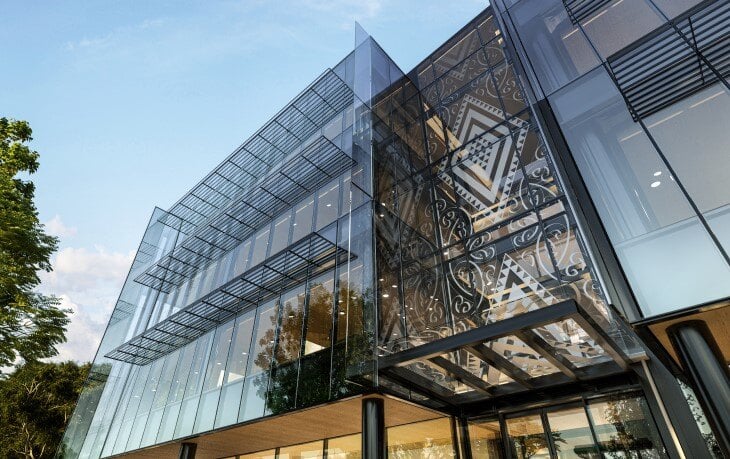Photo by AR on Unsplash
Thanks to all of our members, sponsors, and supporters for what has been a momentous year for green buildings and homes in Aotearoa. In the financial year just ended, working together, we’ve put New Zealanders health at the heart of thousands of homes and buildings, old and new.
2020 / 21 kicked off with the government’s announcement of plans to transform the building sector and slash climate change pollution. The unveiling of the Building for Climate Change programme was hugely welcomed, and followed the release several months prior of our own zero carbon roadmap for Aotearoa’s buildings – the first ever comprehensive raft of solutions intended to tackle the problem of building and construction climate change emissions.
In the year that followed, the number of green homes and buildings has blossomed. Over 20 buildings achieved Green Star certification in the last 12 months, including the first hotel, two libraries and a church. 58 offices benchmarked their energy use with NABERSNZ. Over 1,100 new homes were awarded Homestar certification, and nearly 20,000 homes used the free online HomeFit check.
And we celebrated the first certified carbon neutral building in New Zealand, at the biggest ever Green Property Summit, packed out by almost 500 green building enthusiasts.
The role our sector, and our homes and buildings, can play in the journey to a zero carbon Aotearoa is now firmly recognised by government, and by the Climate Change Commission.
The Commission’s final advice to government clearly states that government should ‘transform buildings to be low emissions and climate resilient’ through a range of measures including continuous improvements to the Building Code, mandating energy performance programmes for existing buildings, and scaling up energy efficiency assistance to low income households.
Shifting to a cleaner, less polluting Aotearoa will only work if people are at the heart of it.
And putting our homes and buildings – the very places where we grow, laugh, work and build memories in – at the heart at our national response is crucial. Slashing the pollution of our buildings – our workplaces, our schools, our hospitals – will give us smarter buildings, with wellbeing at their heart, and which will cost New Zealand businesses and government less to run.
But in too many ways the Commission’s final advice falls short.
We’re concerned about the level of ambition. The final report assumes new homes should aim to be 35% more energy efficient by 2035 compared to today.
This isn’t good enough and misses a real opportunity to reduce carbon and improve the health of New Zealanders. Thousands of homes and buildings are being built right now that are already 35% more energy efficient. The Government’s own Building for Climate Change programme sets a target of near zero energy by 2035, and today’s advice is far behind goals Government have already set.
The Commission calls for scaling up on energy efficiency for households. Let’s be ambitious. Improving buildings in this way has the best jobs return of any policy decision, and also delivers real health benefits. There should be a doubling in the rate of insulation improvement to homes and an expansion of the programme to include other measures such as draughts, and lighting efficiency that drive down carbon and hugely improve health.
Energy efficiency improvements are often the best and lowest-cost option for reducing energy demand and emissions, and this needs to be a priority at the heart of the National Energy Strategy the commission propose. Reducing energy demand can decrease the total amount of energy the system needs to supply and related infrastructure that needs to be built. It also delivers huge health benefits for Kiwi households.
It is important the Infrastructure Commission and Aotearoa Circle’s energy group put energy efficiency first as they consider the infrastructure needs of Aotearoa.
It’s essential that we stop the use of fossil fuels, particularly in our homes and public buildings. The proposal to stop new household gas connections by 2025 is an important first step and one that will make a big difference in our housing carbon footprint.
And there are positive steps encouraging low-emissions design and practices. The Commission has heard our feedback that embodied emissions, from the likes of concrete and steel, represent a significant proportion of building sector pollution. We support the call for Government to prioritise action on this in the first emissions budget.
All of the team here at the Green Building Council is looking forward to working together with you over the next year to make sure we build on our collective achievements, and deliver even more healthy, green buildings and homes for New Zealanders.
Noho ora mai
Andrew



